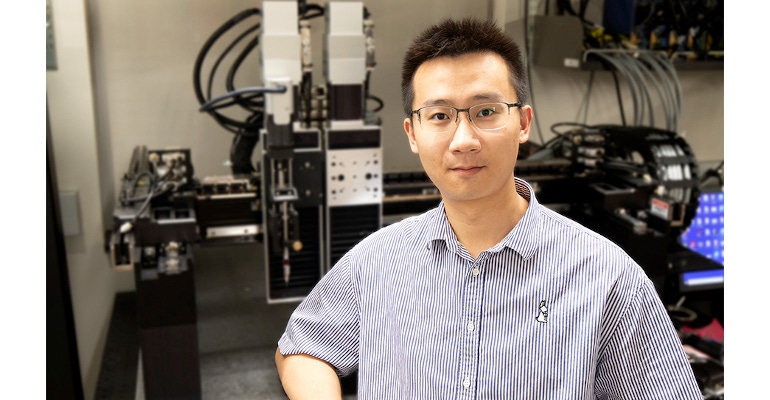Voxelated bioprinting could be the way forward for creating more realistic human organs and other biomaterials.
March 3, 2023

Researchers have taken a new approach to bioprinting that uses droplets to fabricate human tissues and organs in a way that's similar to how voxels comprise 3D models to form video images, they said. A team of materials scientists at the University of Virginia School of Engineering and Applied Science developed the novel bioprinting technique—called digital assembly of spherical bio-ink particles, or DASP—which is in its early stages of development as researchers flesh out the process.
DASP, a form of voxelated bioprinting, uses a customized 3D printer to extrude and deposit bio-ink droplets inside a supporting matrix. This matrix holds them in 3D space in such a way that it eventually should produce more realistic human tissues and other biomaterials, said Jinchang Zhu, a Ph.D. student in the lab of University of Virginia assistant professor Liheng Cai, who lead the research and runs the Soft Biomatter Laboratory.
Once the droplets are deposited, they swell up, which makes them come into contact with one another, Zhu said. They eventually solidify to form a 3D lattice structure that can form the basis of human tissue and even bioprinted organs. “In principle, DASP allows us to precisely define the location, composition, and properties of individual droplets and assemble them into 3D constructs that match the artistry of biological tissues,” he said.
Evolution of a Bioprinting Process
Researchers published a paper in October 2021 in Advanced Functional Materials to prove that their technique of voxelated bioprinting could work. That research served as "a first step toward 3D printing tissue with the complexity and organization needed for biomedical engineering, drug screening, and disease modeling,” Cai said.
The team's latest work evolves the process in several ways. One is to introduce a mechanism for manipulating a viscoelastic droplet in what’s called a yield-stress supporting matrix. This supporting matrix behaves like a pile of sand; it is in its typical state solid, but under stress flows like liquid, researchers said.
Researchers also have identified the three stages of the printing process by monitoring its dynamics in real time. These stages are drop generation, detachment, and relaxation.
Overall the process works like this: As the droplet is extruded, the nozzle moves horizontally at a high acceleration to detach from the droplet, leaving it behind and trapped inside the supporting matrix.
Zhu compared the process to "the classical tablecloth-pulling trick, in which the table cloth is pulled away suddenly, leaving plates on the table due to inertia force,” he said. However, in the voxelated bioprinting process, "the droplet is detached from the nozzle mostly due to the confinement force from the supporting matrix," Zhu explained.
Other Discoveries
Another unique feature of the process identified in the latest research is that both the bio-ink droplets and the supporting matrix are aqueous, with virtually no tension at the boundaries between the droplets and the surrounding environment. In its natural state the bio-ink is highly viscous, like honey; however, it becomes elastic when being deformed at fast rates, researchers said.
Scientists also identified parameters that largely affect the printing resolution. These include droplet diameter, nozzle diameter, and nozzle acceleration. This observation led researchers to conclude that printing droplets of good fidelity requires a relatively large droplet-to-nozzle diameter ratio and a suitable nozzle acceleration up to ten meters per square second.
“Precise manipulation of viscoelastic voxels represents both a fundamental and technological challenge in soft matter science and 3D bioprinting,” Cai said.
The team published a paper on this latest phase of their work in the journal Acta Biomaterialia.
Researchers acknowledge that they are just at the initial phase of establishing the science for voxelated bioprinting, but aim to continue to improve the process so "that we can create highly functional 3D tissue mimics for basic and applied biomedicines," he added.
About the Author(s)
You May Also Like



